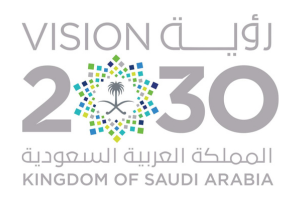Economic Challenges in Third World Countries
List of contents:
Introduction
Poverty and inequality
Unemployment and lack of economic opportunities
Poor infrastructure
Dependence on the export of raw materials
Corruption and mismanagement
Environmental crises and their impact on the economy
Weak integration with the global economy
Weak investment in research and development
Rapid population growth
Public budget deficit
Weak education and vocational training
Weak economic governance systems
Introduction:
Third world countries face complex economic challenges that significantly affect their development and growth. These challenges include issues such as poverty, unemployment, poor infrastructure, corruption, and high dependence on the export of raw materials. Although progress has been made in some areas, these countries are still struggling to achieve sustainable economic development. Understanding and analyzing these challenges is an essential step towards finding effective solutions. In this article, we will look at the most prominent economic challenges facing third world countries and how to deal with them to achieve sustainable development.
1. Poverty and inequality
a) High poverty rates
– Most people in third world countries suffer from low incomes that are insufficient to meet their basic needs.
– Example: Millions of people in Africa and Asia live on less than two dollars a day.
b) Unequal distribution of wealth
– Most of the wealth is concentrated in the hands of a small portion of the population, increasing the gap between the rich and the poor.
– Example: Economic growth is often not reflected in improving the lives of the lowest income groups.
2. Unemployment and lack of economic opportunities
a) High unemployment rates
– Many third world countries are unable to create enough jobs for the population.
– Example: High youth unemployment due to lack of skills or education appropriate for the labor market.
b) Informal economies
– Many people rely on informal jobs that lack job security or rights.
– Example: Working in popular markets or handicrafts without social protection.
3. Poor infrastructure
a) Lack of transportation and energy networks
– Poor infrastructure hinders investment and negatively affects economic productivity.
– Example: The absence of paved road networks makes it difficult to transport goods and services.
b) Inadequate health and education systems
– Health and education systems in many third world countries are underfunded and mismanaged.
– Example: Lack of hospitals and schools in rural areas leads to a deterioration of public health and a low level of education.
4. Dependence on the export of raw materials
a) Impact of global price fluctuations
– Economies depend on the export of raw materials such as oil or minerals, which makes them vulnerable to global price fluctuations.
– Example: A drop in oil prices significantly affects oil-dependent economies such as Nigeria and Angola.
b) Lack of economic diversification
– Dependence on one sector prevents the creation of diversified and sustainable economic sectors.
– Example: Relying solely on agriculture leads to the economy’s vulnerability to shocks associated with natural disasters.
5. Corruption and mismanagement
a) Widespread financial and administrative corruption
– High levels of corruption lead to wasted resources and inefficient use of public funds.
– Example: Funds earmarked for infrastructure or education are diverted to the personal accounts of corrupt officials.
b) Lack of transparency and accountability
– The absence of strict oversight laws makes governments unaccountable for the results of their economic policies.
– Example: Development projects are delayed due to negligence or corruption.
6. Environmental crises and their impact on the economy
a) Climate change and natural disasters
– Natural disasters such as droughts and floods directly affect basic economic sectors such as agriculture.
– Example: Reduced agricultural yields due to drought affect food security in African countries.
b) Unsustainable depletion of resources
– Overexploitation of natural resources leads to environmental degradation and loss of biodiversity.
– Example: Illegal deforestation leads to soil degradation and reduced agricultural production.
7. Poor integration with the global economy
a) Trade Restrictions
– Third world countries face difficulties in accessing global markets due to trade restrictions or tariffs.
– Example: Restrictions on agricultural exports affect countries that rely on them as a major source of hard currency.
b) Lack of modern technology
– Lack of technology hinders competition in global markets and weakens productivity.
– Example: Local companies lack modern equipment compared to international companies.
8. Lack of investment in research and development
a) Lack of innovation
– Third world countries lack the necessary investments in research and development to stimulate innovation and technology.
– Example: The absence of high-tech industries due to lack of investment in research.
b) Reliance on imported technology
– Most countries rely on importing technology instead of developing it locally, which increases costs.
– Example: Importing agricultural equipment instead of developing local technologies that suit the local environment.
9. Rapid population growth
a) Pressure on economic resources
– Rapid population growth leads to increased pressure on basic resources and services.
– Example: Food and water shortages as a result of increasing population without improving infrastructure.
b) High poverty rates among the young population
– Many third world countries suffer from an increasing youth population, which exacerbates unemployment.
– Example: Increasing numbers of young people looking for work without sufficient opportunities in the market.
10. Public budget deficits
a) Heavy External Debt
– Many countries rely on foreign loans, which increases the burden of debt servicing and reduces the funds available for development.
– Example: Allocating a large portion of the budget to debt repayment instead of investing in education or infrastructure.
b) Weak government revenues
– Weak tax collection systems and rampant tax evasion limit the ability of governments to finance development projects.
– Example: Low tax revenues due to the economy’s reliance on informal activities.
11. Weak education and vocational training
a) Lack of appropriate skills for the labor market
– Education is often misaligned with the needs of the labor market, leading to a skills gap.
– Example: University graduates lack the technical skills required in modern sectors.
b) Underinvestment in vocational education
– Countries focus on academic education while neglecting vocational and technical education.
– Example: Shortage of skilled labor in industries such as construction and manufacturing.
12. Weak economic governance systems
a) Unsustainable economic decisions
– Economic policies lack long-term planning and rely on temporary solutions.
– Example: Excessive subsidization of some sectors at the expense of other vital sectors.
b) Lack of regional planning
– Investments are not distributed fairly between urban and rural areas.
– Example: Concentrating development in major cities while neglecting rural areas.
Valeo’s role in addressing the economic challenges of third world countries
Third world countries face complex economic challenges that require innovative and effective solutions to achieve sustainable development. Feasibility studies play a vital role in addressing these challenges, helping to make informed and effective economic decisions. Among the companies providing integrated consulting services to help these countries overcome their economic issues, Valeo Feasibility Studies and Business Solutions stands out by providing consultations and studies aimed at improving economic performance and enterprise development. In this article, we explore Valeo’s role in addressing the economic challenges of third world countries through practical and impactful strategies.
Addressing the economic challenges faced by third world countries requires concerted efforts and utilizing innovative solutions that contribute to sustainable growth. This is where companies like Valeo Feasibility Studies and Business Solutions come into play, providing strategic consulting and comprehensive feasibility studies that help build viable businesses. By providing the tools to analyze opportunities and risks, Valeo provides practical solutions that improve the economic structure of these countries. The challenges are great, but with smart partnerships and effective implementation, these challenges can be transformed into promising development opportunities that contribute to building a sustainable economic future. Don’t hesitate to contact us via WhatsApp or call us for consultations and feasibility studies that will help turn your ideas into successful projects. We are here to provide the necessary support and achieve your economic and investment goals.





